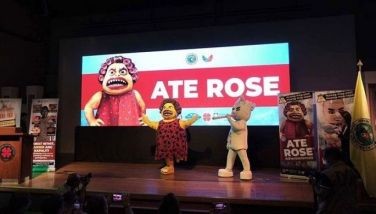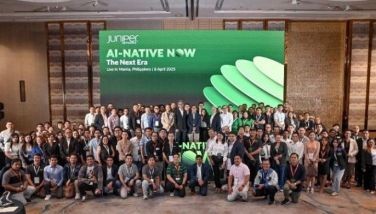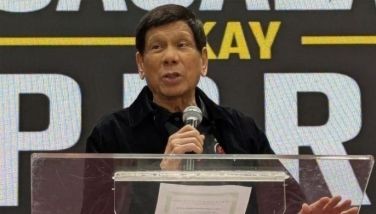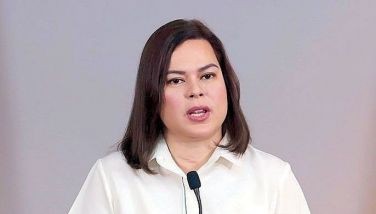Introduce yourself!

Whether you were once a student of mine at the Development Academy of the Philippines or found yourself having to attend one of my many seminars on “Communications and Media Management” you probably remember how it all started. I asked each of you to introduce yourself, not just through name, rank and serial number or title in the bureaucracy, but to tell us something interesting about you and what you do, a challenge you are currently facing, what your expectations were from the course or the seminar and what you hoped to achieve thereafter. In between, I would disrupt your trend of thought as I pointed out how your fashion choices made you look bad, odd or standoffish. Midway, I had already pointed out that you, along with your colleagues, were grappling or struggling because you never really placed much value, preparation and failed to realize the significance of your “Self-Introduction.”
Yes, if first impressions were a death sentence many of you would have already been cremated. Then we began to craft introductions by beginning with why introductions mattered as a general rule and how first impressions or weak introductions could determine your success or failure as a leader and public figure. From there, I pointed out to the class or participants that the reason many government officials especially cabinet members fail to gain traction and support in the public arena is simply because each and every administration and presidency has failed miserably in properly introducing the incoming or would-be secretaries to the cabinet. It gets worse when the chosen cabinet secretaries have been hiding under a rock or in some faculty room or board room of a corporation for the past years and made worse when the candidates or chosen few have not been told to do the rounds with media outlets at least one month or two weeks before the announcement of their appointment. This is unlike in the United States where past nominees do the rounds in media, Congress and business groups in order to get a feel if they would get enough public support to make it through their Commission on Appointments.
More often than not, Filipinos often ask: “Sino siya at ano ang ‘K’ niya?” (Who is he and what qualified him for the job?) because cabinet secretaries or political appointees are not known in advance nor do they get the chance to do the rounds. It is all good and well if the Cabinet member or political appointee is a well-known public figure but when the nominee or selected individual comes in from the cold, it can result in that person being challenged, subjected to hostile opposition or victimized through false claims etc. This is what happens when the strength and the competence as well as the vote of confidence is not established on behalf of the candidate. Even before they get past the Commission on Appointments, they already have a battle to fight or hills to climb.
In connection to this, I have taught my students the importance of properly introducing speakers, guest speakers or yourself whenever you participate in a public forum or give a speech. I used to disdain flowery introductions, or refrains of past achievements and titles but as I studied different audiences time and again, there was a pattern of expectation. People always wanted to know about the speaker or resource person and what was the basis or why they were chosen either for a position or for a job. This is key to any introduction; to establish why the person is qualified to address the audience or why the person has been nominated or appointed to a position or job. This holds just as true for the private sector where long term practitioners or employees may see the entry of another person as nothing but more competition or someone who might take their job instead of contributing to their work.
Just last week, I went out of my way to know more about a guest we had on our show AGENDA on Cignal TV beyond the brief intros before the interview, which spoke only about being a government official and what he was in charge of. But when I asked the guest, he reluctantly shared his long career in International Finance and work with the World Bank and the Asian Development Bank and several advisory councils. Two sentences immediately elevated his competency from a mere bureaucrat or political appointee up to international level consultant and resource person and explain why he had the right to comment on burning issues. Having made a series of announcements regarding incoming Cabinet members and principal appointees, let’s all pray that the BBM administration will do whatever it takes to properly introduce their team members and not just through the usual channels or favored media outlets or social media contacts.
A veteran broadcaster and media executive recently shared how certain groups, individuals or personalities have become very selective in their public information engagement in order to control the narrative or to make sure that their engagements are frictionless by dealing only with “Kakampis,” or allies who have towed the line with them in the past administration or those who have openly supported them or were friendly during the campaign. While “bias and selectivity” may achieve the desired attitude of passivity and professional compromise, it is self-limiting in terms of audience reach and a betrayal of public interest. I suspect that some officials in the Duterte administration may have even come up with a “Do not entertain” list of media programs and individuals given their “No Reply” conduct to requests for interviews. But as the saying goes: “their loss” as well as the public’s loss. By failing to introduce yourself, your competence, your duties, your goals, you ultimately fail in the eyes of the public. That is how governments fail.
- Latest
- Trending





























